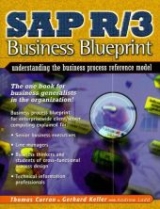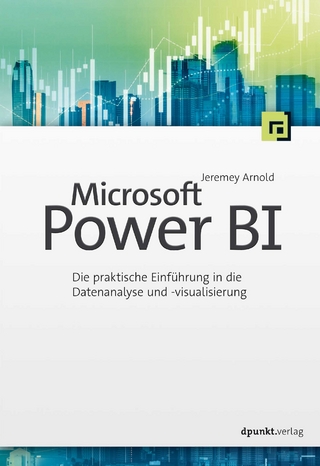
SAP R/3 Business Blueprint
Prentice Hall (Verlag)
978-0-13-521147-2 (ISBN)
- Titel erscheint in neuer Auflage
- Artikel merken
52114-6 Let SAP's R/3 change the way you think about business engineering This book is a businessman's bible about business process design. Using SAP's leading enterprise software product R/3 as a backdrop, it is the first book to explain the structure and content of common business processes that management deals with on a daily basis. The authors paint the future of business process change by giving the reader the terminology, content, and technology behind an evolving standard for enterprises in the new age(the business blueprint. Here is a collection of process and object descriptions that are the basis for streamlining your company in the future. The book explains how to understand the process content of systems like R/3 and apply it to your company. Most business software is applied on top of existing structures, to mimic old-fashioned methods and procedures. R/3 allows users to design and model processes all along the value chain, crossing functional and organizational boundaries, to achieve true integration.S
AP R/3 Business Blueprint uses three main sections to present this paradigm in a style that is accessible across the organization: *Business Engineering sketches the big picture for high-level decision makers, without getting bogged down in technical detail. Senior managers can gain familiarity with the major features and tools available under R/3, and learn the most important aspects of its evaluation and implementation. *Process Design details R/3's applications to such specific fields as sales, production, finance, and human resources. Practical business process scenarios are used throughout the book to show R/3 in action in a variety of settings. *Architecture, Framework, and Tools provides nuts-and-bolts information for IS professionals. A thorough overview of the technical specifications and structure shows how organizations can easily implement R/3 to improve stabilization and communication across departments and processes. In particular, this book explains the impact of new technologies such as Windows( NT( and the Internet on future business process design. It considers the scenarios that companies will need to integrate based on a common business process understanding.Developed by an international team, SAP R/3 Business Blueprint draws on nearly a decade of client/server history in organizations around the world to present a complete, inside look at this powerful tool for enterprise-wide business engineering.
0-13-521147-6
Foreword
Introduction.
What Is SAP? What Is R/3? What Is the R/3 Reference Model? Who Uses R/3? How Do Customers View R/3?xxvii Conclusion.
I. BUSINESS ENGINEERING.
1. Business Engineering and Enterprise Optimization.
Significance of Business Engineering. Principles of Business Engineering. Objectives of Business Engineering. Benefits of Business Engineering. Business Engineering with Information Technology. Integration of Information Technology. Developments in Information Technology. Client/Server Technology. Benefits of Client/Server Technology. SAP and Client/Server Technology. Conclusion.
2. The Business Blueprint.
Pros and Cons of Business Blueprints. General Design of the R/3 Blueprint. Focus of the R/3 Blueprint. Event-Driven Process Chain Methodology (EPC). Describing Complex Business Processes. EPC Methodology and Viewpoints in the R/3 Reference Model. Summary.
3. Configure to Order.
Standard Software Implementation Issues. Mapping with the Business Blueprint. Redlining the Blueprint. Extending the Business-Process Design. Implementation Case Studies. Conclusion.
II. PROCESS DESIGN.
4. Value Chain Thinking.
The Value Chain Principle. R/3 and the Value Chain. Overview of Part 2: Value Chain Thinking.
5. Sales Logistics.
Standard Order Handling Scenario. Contract Handling. Third-Party Order Handling. Customer Consignment Stock Handling. Cash Order Handling. Rush Order Handling. Decentralized Shipping. Sales and Distribution Examples.
6. Production Logistics.
Production by Lot Size. Repetitive Manufacturing. Make-to-Order Production. Process Manufacturing. Project-Related "Engineer to Order". Quality Management for Goods Receipt from Production. Production Logistics Example: Autodesk Incorporated, Sausalito, California.
7. Procurement Logistics.
Processing Stock Material Scenario. Processing of Consumable Material. Management of Consignment Stocks. Subcontract Order Processing. Stock Transfer Processing. External Services Management. Materials Management Examples.
8. External Accounting.
Vendor Processing. Customer Processing. OTA Vendor Processing. Creditor Subsidiary/Head-Office Processing. General Ledger Processing. Special-Purpose Ledgers Processing. Consolidation. Customer Example: Syntex Corporation, Palo Alto, California, and Maidenhead, England.
9. Organization and Human Resource Management.
Personnel Management. Business Event Processing. Travel Expense Processing. Time Management Processing. Payroll Processing. Salary Administration. Benefits Administration. Customer Example: The Wellmann Group, Enger, Germany.
10. Business Planning and Controlling.
Cost Object Controlling. Profitability Analysis. Profit Center Accounting. Overhead Cost Management. Customer Example: Convex Computer Corporation, Richardson, Texas.
11. Capital Asset Management.
Planned Plant Maintenance. Plant Maintenance Due to Damage. Project-Related Plant Maintenance. Cash Management. Budgeting. Fixed Asset Processing. Leased Asset Processing. Customer Example: Chevron Products Company, U.S.A.
III. ARCHITECTURE, FRAMEWORK, AND TOOLS.
12. Architecture of the R/3 System.
R/3 and the Distributed Environment. The Three-Tier Client/Server R/3 Architecture. Benefits of the R/3 Three-Tier Client/Server. Interprogram Communication. Middleware Transaction Management. Rationale for Distributed Business-Process Integration. Capabilities of Application Distribution in R/3. Tools for Application Distribution. Conclusion.
13. R/3 Framework and Infrastructure.
Background of Business Integration. SAP Business Framework. Repository as Integrating Factor. Enterprise Application Development. Conclusion.
14. Business Engineering in R/3.
R/3 Business Engineer Overview. Benefits of the R/3 Business Engineer. Modeling and Configuring the Enterprise. Using the R/3 Reference Model. Guideline for Implementing R/3. Project Management. Workflow and Personnel Organization. Open Repository Interface. Business Engineer: Future Vision.
15. New Age Enterprise.
Electronic Commerce. New Age Application Components. R/3 Internet Application Scenarios. The Industry Reference Model, Process Configuration, and Vertical Markets. Autonomous Software Agents. Conclusion.
Index.
| Erscheint lt. Verlag | 11.8.1997 |
|---|---|
| Verlagsort | Upper Saddle River |
| Sprache | englisch |
| Maße | 235 x 176 mm |
| Gewicht | 517 g |
| Themenwelt | Mathematik / Informatik ► Informatik ► Office Programme |
| ISBN-10 | 0-13-521147-6 / 0135211476 |
| ISBN-13 | 978-0-13-521147-2 / 9780135211472 |
| Zustand | Neuware |
| Informationen gemäß Produktsicherheitsverordnung (GPSR) | |
| Haben Sie eine Frage zum Produkt? |
aus dem Bereich



